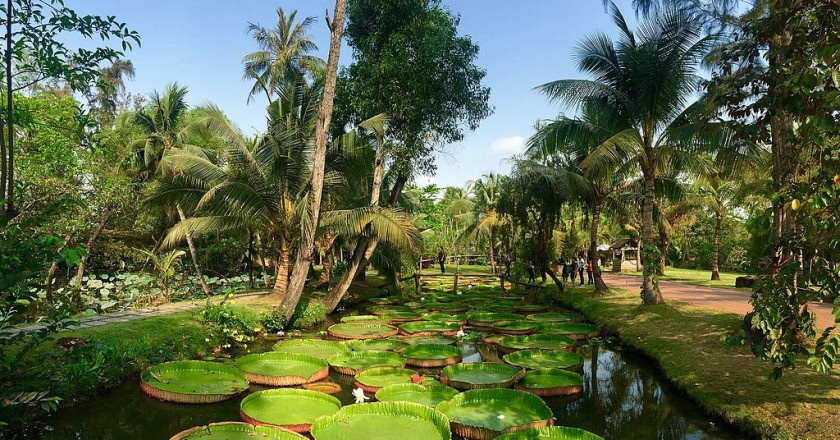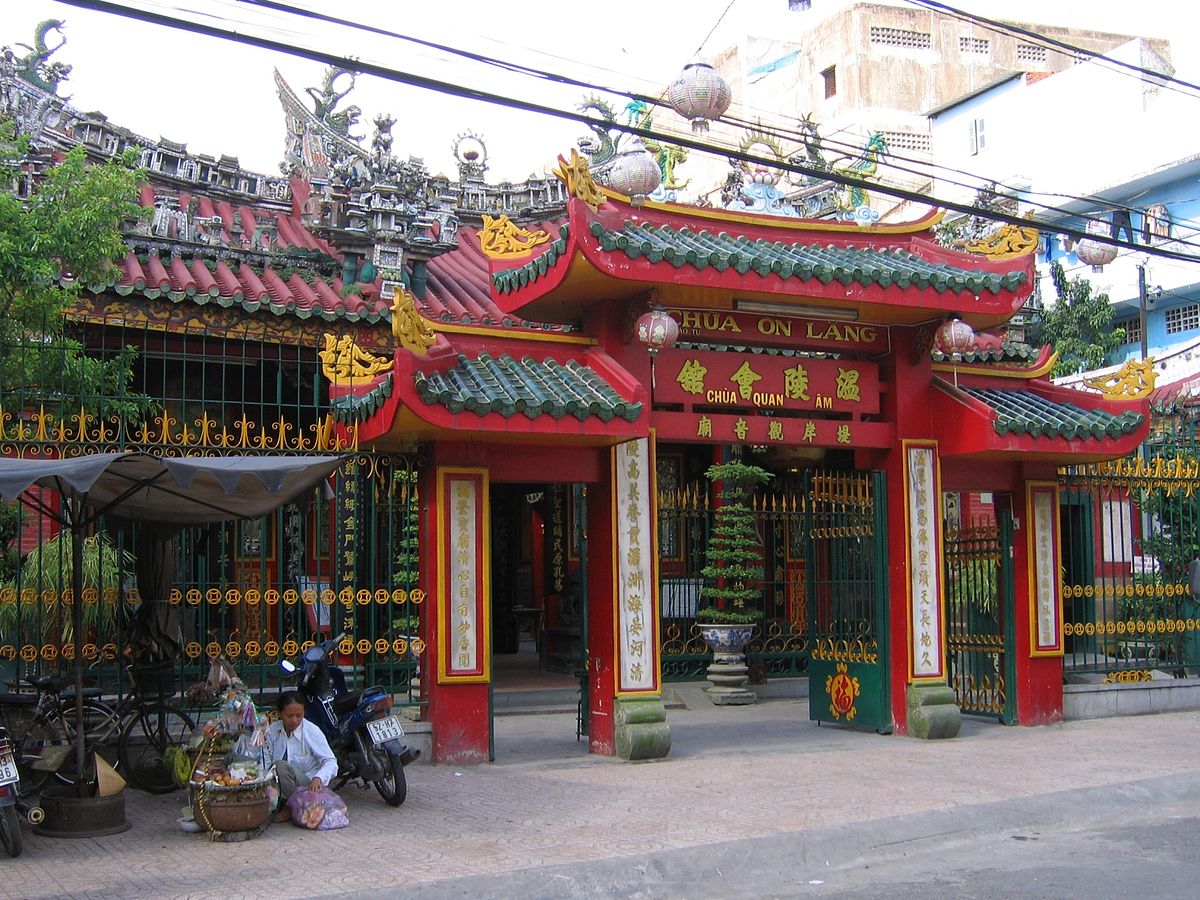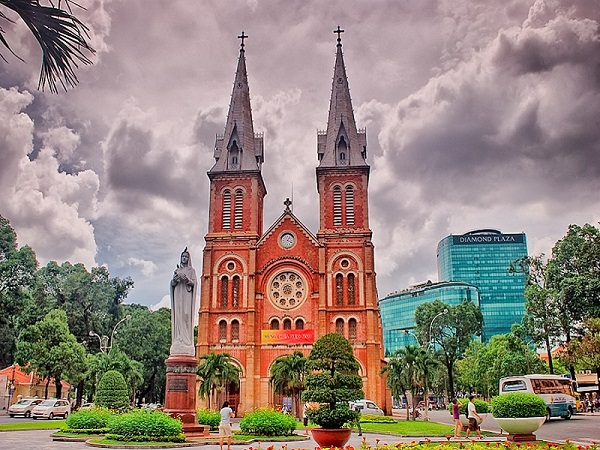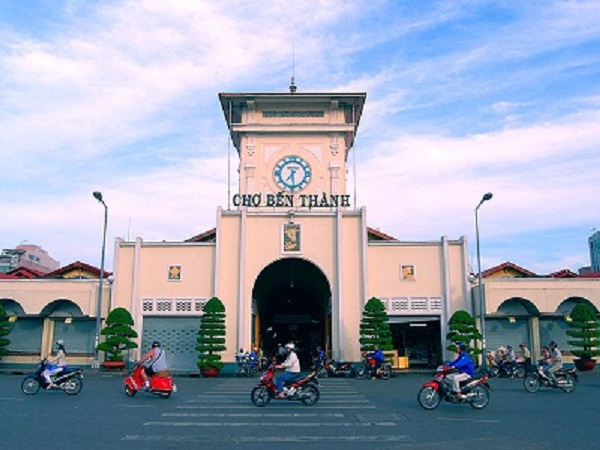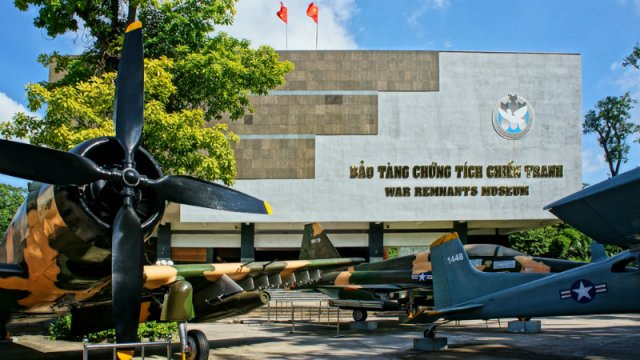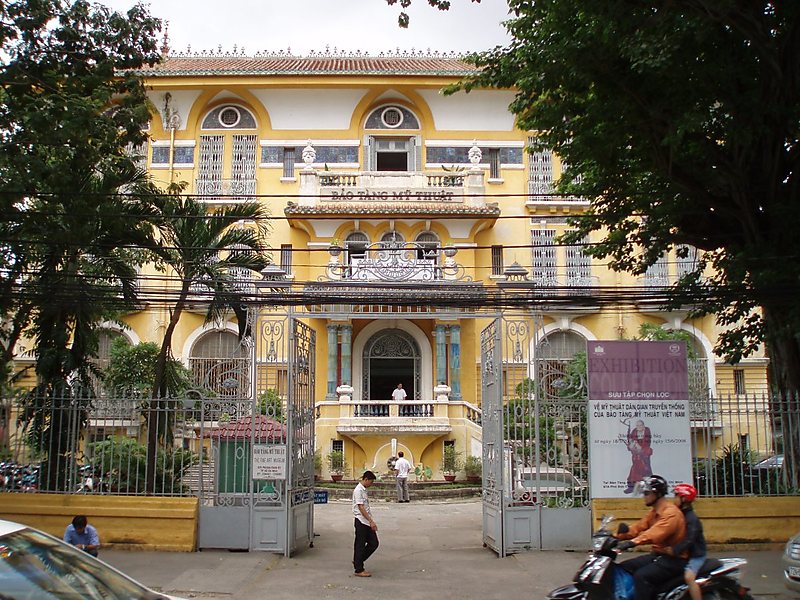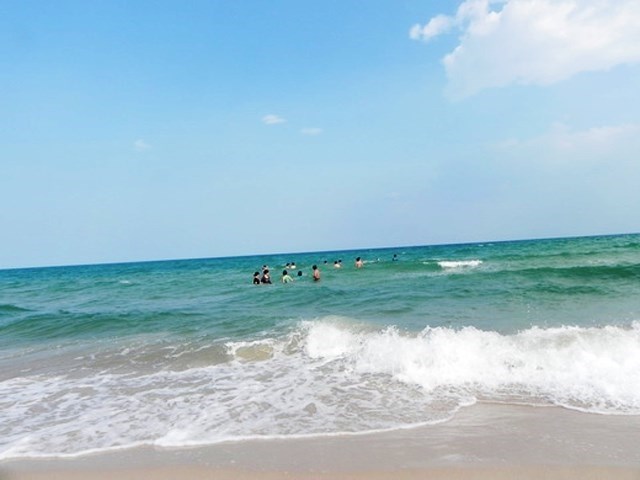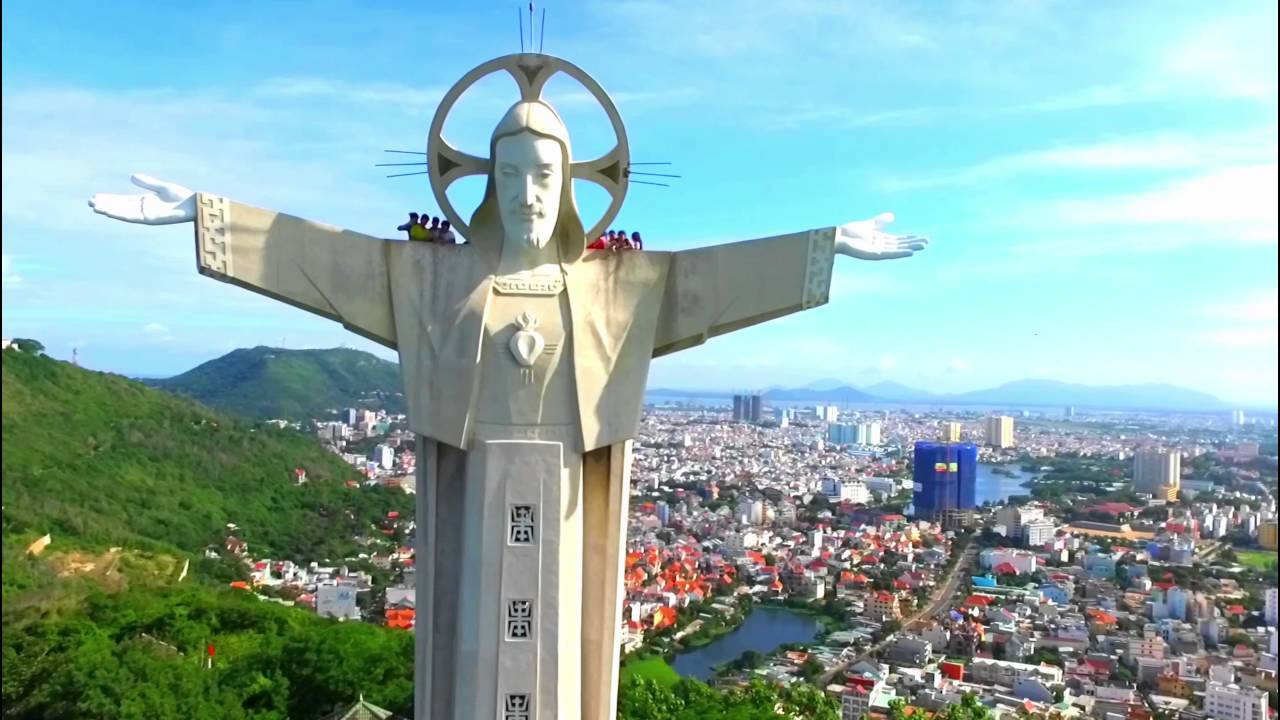Reunification Palace, Ho Chi Minh City
Reunification Palace, Ho Chi Minh City
Like Long Bien Bridge in Hanoi, Reunification Palace (formerly known as Independence Palace) has stayed in the mind of many generations of not only Vietnamese but also foreigners. I
Location and History
Like Long Bien Bridge in Hanoi, Reunification Palace (formerly known as Independence Palace) has stayed in the mind of many generations of not only Vietnamese but also foreigners. It is known as the famous historical witness which passed through the two fierce wars against the French and American colonists. The palace was built on the site of the former Norodom Palace, a landmark in Ho Chi Minh City and designed by architect Ngo Viet Thu. As Vietnam was split into North Vietnam and South Vietnam, the building served as presidential home and workplace. Today in most locals' minds, the palace is remembered vividly as a marked end to the war, just like the fall of Berlin Wall, as the North Vietnamese tank crashed its gates on April 30th, 1975.
Its current address is at 135 Nam Ky Khoi Nghia Street, District 1, Ho Chi Minh City - right at one end of Le Duan Street. It borders other 3 streets: Huyen Tran Cong Chua Street in the back, Nguyen Thi Minh Khai Street on the right and Nguyen Du on the left.
A witness of history
Reunification Palace’s architecture is a blend of traditional ritual and modern architecture, typical of the 60s’. However, the design of the complex is not as appealing to tourists as all the historical events related to this building. Wandering around its rooms, visitors may be reminded of various important moments in the past of Vietnam, especially the war command room with its huge maps and old communication equipment, as well as the basement labyrinth. The building now functions as a museum, where visitors can view the F5E fighter plane which bombed the palace on 8thApril 1975 and tank 843 which led the final assault through the palace gate at 11.30AM on 30th April 1975.
Since its construction, the building has gone through several renovation. A major work was undertaken from 1962 to 1963, which made the President change his office temporarily to Gia Long Palace, which is now the location of Ho Chi Minh City Museum. Much political turbulence led to the come and go of several South Vietnam President, until 1975 when the war officially ended and Vietnam became one country.
Visitor information
The Reunification Palace is open all the week from 7.30 AM to 11.30AM and 1.00PM to 5.00 PM. Entrance ticket is VND 20,000 (about $1). Guided tours in English are also available. Getting there is extremely easy by taxi, motorbike or walking, as the palace is so well-known and right in the center.
Like Long Bien Bridge in Hanoi, Reunification Palace (formerly known as Independence Palace) has stayed in the mind of many generations of not only Vietnamese but also foreigners. I
Location and History
Like Long Bien Bridge in Hanoi, Reunification Palace (formerly known as Independence Palace) has stayed in the mind of many generations of not only Vietnamese but also foreigners. It is known as the famous historical witness which passed through the two fierce wars against the French and American colonists. The palace was built on the site of the former Norodom Palace, a landmark in Ho Chi Minh City and designed by architect Ngo Viet Thu. As Vietnam was split into North Vietnam and South Vietnam, the building served as presidential home and workplace. Today in most locals' minds, the palace is remembered vividly as a marked end to the war, just like the fall of Berlin Wall, as the North Vietnamese tank crashed its gates on April 30th, 1975.
Its current address is at 135 Nam Ky Khoi Nghia Street, District 1, Ho Chi Minh City - right at one end of Le Duan Street. It borders other 3 streets: Huyen Tran Cong Chua Street in the back, Nguyen Thi Minh Khai Street on the right and Nguyen Du on the left.
A witness of history
Reunification Palace’s architecture is a blend of traditional ritual and modern architecture, typical of the 60s’. However, the design of the complex is not as appealing to tourists as all the historical events related to this building. Wandering around its rooms, visitors may be reminded of various important moments in the past of Vietnam, especially the war command room with its huge maps and old communication equipment, as well as the basement labyrinth. The building now functions as a museum, where visitors can view the F5E fighter plane which bombed the palace on 8thApril 1975 and tank 843 which led the final assault through the palace gate at 11.30AM on 30th April 1975.
Since its construction, the building has gone through several renovation. A major work was undertaken from 1962 to 1963, which made the President change his office temporarily to Gia Long Palace, which is now the location of Ho Chi Minh City Museum. Much political turbulence led to the come and go of several South Vietnam President, until 1975 when the war officially ended and Vietnam became one country.
Visitor information
The Reunification Palace is open all the week from 7.30 AM to 11.30AM and 1.00PM to 5.00 PM. Entrance ticket is VND 20,000 (about $1). Guided tours in English are also available. Getting there is extremely easy by taxi, motorbike or walking, as the palace is so well-known and right in the center.
Other Article
Saigon Introduction
Reunification Palace is definitely the place to visit, for its significance and archival of Vietnam War. If this building still does not impress you enough, rest assured that museums are abound and the admission fees are generally low. Among the most recommended ones are: Ho Chi Minh Museum, Revolutionary Museum and Vietnam History Museum...
People's Committee Building - Ho Chi Minh City
The building was built and put into use in 1909 as a hotel whose original name was Hôtel de Ville. It was designed by Gardes, a famous French architecture. This building is thus one of the oldest, biggest and most beautiful French style buildings in Ho Chi Minh City, functioning both as a city institution and as the city’s most prominent landmark today...
Binh Quoi Village
Located on Saigon riverside, Binh Quoi Tourist Village has two branches: 1 & 2. Number 1 is at 1147 Binh Quoi, Binh Thanh District while number 2 is just a few kilometers away, at the very end of the road. Binh Quoi Tourist Village is just about 8 – 10 km from Ho Chi Minh City centre and can be a nice day trip from the crowded city centre...
Cho Lon, District 5
Today, visitors still get much of what the town has remained for years in District 5 and a part of District 6, with the core center surrounded Cho Lon Post Office, Hai Thuong Lan Ong Street and fishbone-shaped streets such as Trieu Quang Phuc, Luong Nhu Hoc, Mac Cuu, etc...
Suoi Tien Theme Park
Suoi Tien Theme Park is located about 40 minutes from downtown Ho Chi Minh City, in Thu Duc district. Several years ago, this was an uninhabited land which had a natural stream flowing across endemic forest and natural scenery...
Central Post Office
The Central Post Office is at number 2, Paris Commune Street, District 1. This is one of the oldest buildings in Ho Chi Minh City. The Central Post Office was built around 1886 – 1891 based on Villedieu’s design, a famous French architect...
Saigon Notre-Dame Cathedral
Ask any local people about the location of the city’s center or its symbol, the answer would definitely be Ben Thanh Market or Saigon Notre Dame Cathedral (officially Basilica of Our Lady of The Immaculate Conception). While the market stands at a modern and crowded corner of the business district, the ancient cathedral is located in a very peaceful picturesque corner in the downtown of Ho Chi Minh City...
Ben Thanh Market
Believe it or not, even though you have spent years shopping at several malls and commercial centers that shopping has become a boring and ordinary task to you, exploring an Asian market is always an exhilarating experience...
War Remnants Museum
By visiting one of the most famous history museums, the War Remnants Museum, you have totally transformed your ordinary visit to Ho Chi Minh City to an intellectual yet remarkable trip...
Fine Arts Museum Ho Chi Minh city
Being one of the largest fine arts centers of Vietnam, Fine Arts Museum is conveniently located near the Ben Thanh Market, at 97A Pho Duc Chinh Street, District 1, Ho Chi Minh City. The building that houses the museum was originally a mansion of a Chinese during colonial time and after - Mr. Hoa, the wealthiest man of Saigon at the time, who also owned other famous buildings in the city such as Majestic Hotel and Tu Du Hospital...
Vung Tau Introduction
Vung Tau is Ho Chi Minh City's closest beach resort, and can be reached by a picturesque hydrofoil ride down the Sài Gòn River or by a rather circuitous highway route. The water is not terribly clean, but the town with its fishing fleet and outdoor restaurants is colorful and relaxing. Thousands flock there on Sunday afternoons to jump into the surf with most of their clothes on. Bai Truoc (Front Beach) is most popular...
Giant Jesus Statue
Atop Small Mountain with his arms outstretched to embrace the South China Sea (East Sea), this 32m giant Jesus is one of the biggest in the world – taller than his illustrious Brazilian cousin. It's possible to ascend to the arms for a panoramic view of Vung Tau...
Powered by NAM Travel (Nam Huong Travel Limited Company)
© Copyright 2018 NAM Travel (Nam Huong Travel Limited Company) - Use of this website constitutes acceptance of the NAM Travel (Nam Huong Travel Limited Company)'s

.jpg)
